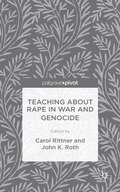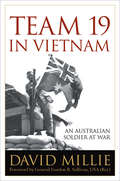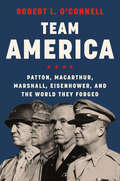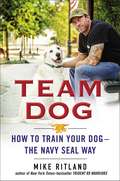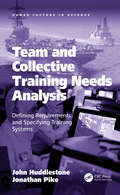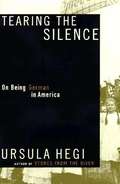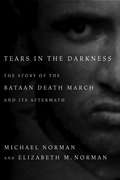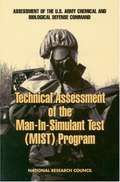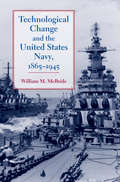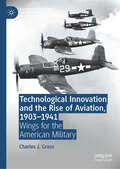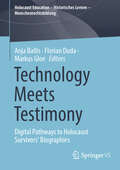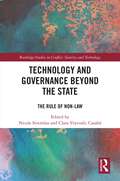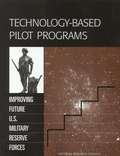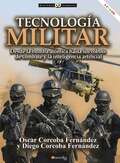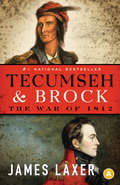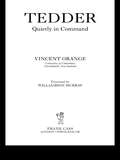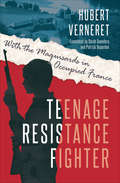- Table View
- List View
Teaching about Rape in War and Genocide
by John K. Roth Carol RittnerTeaching about Rape in War and Genocide.
Teaching and Learning Through the Holocaust: Thinking About the Unthinkable
by Jeffrey Parker Anthony PellegrinoThis book serves as a critical resource for educators across various roles and contexts who are interested in Holocaust education that is both historically sound and practically relevant. As a collection, it pulls together a diverse group of scholars to share their research and experiences. The volume endeavors to address topics including the nature and purpose of Holocaust education, how our understanding of the Holocaust has changed, and resources we can use with learners. These themes are consistent across the chapters, making for a comprehensive exploration of learning through the Holocaust today and in the future.
Team 19 in Vietnam: An Australian Soldier at War (Foreign Military Studies)
by David MillieAn Australian Army veteran offers a rare glimpse into the multi-national operations of the Vietnam War in this vivid and thoroughly researched memoir.In Team 19 in Vietnam, David Millie offers an insightful account of his twelve-month tour with the renowned Australian Army Training Team Vietnam in Quang Tri Province—a crucial tactical site along the demilitarized zone that was North Vietnam's gateway to the south. This firsthand narrative vividly demonstrates the importance of the region and the substantial number of forces engaged there.Drawing from published and unpublished military documents, his personal diary, and the letters he wrote while deployed, Millie introduces readers to the daily routines, actions, and disappointments of a field staff officer. Millie also discusses his interactions with province senior advisor Colonel Harley F. Mooney and Major John Shalikashvili, who would later become chairman of the US Joint Chiefs of Staff.Few Australian accounts of the Vietnam War exist, and Millie offers a fresh perspective on the year after the Tet offensive. He contends that responsibility for the catastrophe inflicted on Vietnamese civilians is shared by an international community that failed to act effectively in the face of a crisis.
Team America: Patton, MacArthur, Marshall, Eisenhower, and the World They Forged
by Robert L. O'ConnellFrom national bestselling author and acclaimed military historian Robert L. O’Connell, a dynamic history of four military leaders whose extraordinary leadership and strategy led the United States to success during World War I and beyond.By the first half of the twentieth century, technology had transformed warfare into a series of intense bloodbaths in which the line between soldiers and civilians was obliterated, resulting in the deaths of one hundred million people. During this period, four men exhibited unparalleled military leadership that led the United States victoriously through two World Wars: Douglas MacArthur, George Patton, George Marshall, and Dwight “Ike” Eisenhower; or, as bestselling author Robert O’Connell calls them, Team America.O’Connell captures these men’s unique charisma as he chronicles the path each forged—from their upbringings to their educational experiences to their storied military careers—experiences that shaped them into majestic leaders who would play major roles in saving the free world and preserving the security of the United States in times of unparalleled danger. O’Connell shows how the lives of these men—all born within the span of a decade—twisted around each other like a giant braid in time. Throughout their careers, they would use each other brilliantly in a series of symbiotic relationships that would hold increasingly greater consequences.At the end of their star-studded careers (twenty-four out of a possible twenty-five), O’Connell concludes that what set Team America apart was not their ability to wield the proverbial sword, but rather their ability to plot strategy, give orders, and inspire others. The key ingredients to their success was mental agility, a gravitas that masked their intensity, and an almost intuitive understanding of how armies in the millions actually functioned and fought. Without the leadership of these men, O’Connell makes clear, the world we know would be vastly different.
Team Diversity and Inclusion in Defence and Security: International Perspectives (The Military and Society)
by Daniel P. McDonald Barbara T. Waruszynski Yantsislav YanakievAs a toolkit for the issues and challenges of diversity and inclusion in defence and security organizations, this state-of-the-art book allows leaders, managers, practitioners, and personnel to examine international perspectives on the current research, best practices, lessons learned, and strategies for promoting greater teamwork, collaboration, trust, cohesion, and organizational performance. Authors discuss critical areas such as (a) gender, ethnic, and cultural diversity; (b) international case studies that employ diverse and inclusive management practices; (c) inclusive, team-based, and transformational leadership; (d) evidence-based approaches to understanding best practices and lessons learned in diversity and inclusion; and (e) methods, innovative strategies, programs, and recommendations to help promote greater team engagement, resilience, and adaptability in defence and security. This book moves beyond theoretical discussions and provides practical approaches and recommendations to generate effective problem-solving, innovation, and creativity across organizations. By embracing team diversity and inclusion practices, organizations can better leverage diverse knowledge, skills, and experiences to help build a sustainable culture where people work together to achieve effective solutions to real-world problems.
Team Dog: How to Train Your Dog--the Navy SEAL Way
by Gary Brozek Mike RitlandNew York Times-bestselling author and former Navy SEAL Mike Ritland teaches all dog owners how to have the close relationship and exceptional training of combat dogs. <P><P>In TEAM DOG, Mike taps into fifteen years' worth of experience and shares, explaining in accessible and direct language, the science behind the importance of gaining a dog's trust and then offering invaluable steps for how to achieve any level of obedience. His unique approach uses entertaining examples and anecdotes from his work with dogs on and off the battlefield and direct tips from the Navy SEAL guidebook to teach dog owners how to: choose the perfect dog for their household, establish themselves as the "team leader," master "command and control," employ "situational awareness," and to solidify their dog's position as the family's ultimate best friend.<P>TEAM DOG introduces pet owners everywhere to the new and distinctive authority on how to train your dog. . . the SEAL way.
Team and Collective Training Needs Analysis: Defining Requirements and Specifying Training Systems (Human Factors in Defence)
by Jonathan Pike John HuddlestoneMilitary capability is delivered operationally at a team and collective level, be it a unit as small as a squad or section, or as large as a maritime task group. Modern military forces are required to deal with a potentially wide range of missions frequently involving multiple alliance partners, within a geopolitical environment which can seem to change rapidly. Individual performance, while being important, is not the primary determinant of mission success - force integration, interoperability, adaptability and teamwork are key factors. Team and collective training which fully addresses these factors is fundamental to the development and delivery of military capability. As a consequence, the requirement to determine training requirements and specify effective systems for the delivery of team and collective training is critical to operational success. Training Needs Analysis (also known as Front End Analysis), is a well-established methodology for analysing training requirements and specifying training solutions used extensively by the UK and its NATO partners. However, the analytical techniques employed are optimised for individual training, with little guidance being offered on its application in the team and collective context. Team and Collective Training Needs Analysis (TCTNA) has been developed to close this methodological gap. It addresses the issues of the relationship of individual and team tasks, teamwork, command and control, task and training environments, scenario definition, instructional strategy, team training approaches, instructional functions, and wide-ranging organisational and procurement considerations. Part One of the book develops an integrated set of models which underpin the analytical approach presented in Part Two. Worked examples and case studies illustrate the application of the approach. Between 2005 and 2015 the authors worked on numerous training-related research projects at Cranfield University and Coventry University for the Human Factors Integration Defence Technology Centre and the Defence Human Capability Science and Technology Centre on behalf of the Defence Science and Technology Laboratory, UK Ministry of Defence.
Tearing the Silence: On Being German in America
by Ursula HegiThis book is the collection of the author's interviews with twelve German-born Americans, and their conflict with the silence surrounding the Holocaust.
Tears in the Darkness: The Story of the Bataan Death March and Its Aftermath
by Michael Norman Elizabeth NormanThis major new work about World War II exposes the myths of military heroism as shallow and inadequate. "Tears in the Darkness" makes clear, with great literary and human power, that war causes suffering for people on all sides.
Technical Assessment of the Man-In-Simulant Test (MIST) Program: Report 1
by Standing Committee on Program Technical Review of the U.S. Army Chemical Biological Defense CommandFirst report on Technical Assessment of the Man-In-Simulant Test (MIST) Program
Technological Change and the United States Navy, 1865–1945 (Johns Hopkins Studies in the History of Technology #27)
by William M. McBrideWinner, Engineer-Historian Award from the American Society of Mechanical EngineersNavies have always been technologically sophisticated, from the ancient world's trireme galleys and the Age of Sail's ships-of-the-line to the dreadnoughts of World War I and today's nuclear-powered aircraft carriers and submarines. Yet each large technical innovation has met with resistance and even hostility from those officers who, adhering to a familiar warrior ethos, have grown used to a certain style of fighting. In Technological Change and the United States Navy, William M. McBride examines how the navy dealt with technological change—from the end of the Civil War through the "age of the battleship"—as technology became more complex and the nation assumed a global role. Although steam engines generally made their mark in the maritime world by 1865, for example, and proved useful to the Union riverine navy during the Civil War, a backlash within the service later developed against both steam engines and the engineers who ran them. Early in the twentieth century the large dreadnought battleship at first met similar resistance from some officers, including the famous Alfred Thayer Mahan, and their industrial and political allies. During the first half of the twentieth century the battleship exercised a dominant influence on those who developed the nation's strategies and operational plans—at the same time that advances in submarines and fixed-wing aircraft complicated the picture and undermined the battleship's superiority.In any given period, argues McBride, some technologies initially threaten the navy's image of itself. Professional jealousies and insecurities, ignorance, and hidebound traditions arguably influenced the officer corps on matters of technology as much as concerns about national security, and McBride contends that this dynamic persists today. McBride also demonstrates the interplay between technological innovation and other influences on naval adaptability—international commitments, strategic concepts, government-industrial relations, and the constant influence of domestic politics. Challenging technological determinism, he uncovers the conflicting attitudes toward technology that guided naval policy between the end of the Civil War and the dawning of the nuclear age. The evolution and persistence of the "battleship navy," he argues, offer direct insight into the dominance of the aircraft-carrier paradigm after 1945 and into the twenty-first century.
Technological Innovation and the Rise of Aviation, 1903-1941: Wings for the American Military (Palgrave Studies in the History of Science and Technology)
by Charles J. GrossThis book provides an overview of American aviation from 1903 to 1941, covering major developments in aviation technology. It focuses on the role of the military and selected firms. Under the fiscal constraints imposed by the post-war military drawdown and the Great Depression, the US military sacrificed quantity aircraft procurement for gains in quality. Until foreign powers began huge rearmament programs, US military aircraft were some of the most advanced in the world. They held numerous international performance records before the US fell behind other powers that had gone on a war footing. It offers new insights into the contributions of immigrants and foreign technologies to American aviation, while examining the relationship between the government and the aviation industry. It also highlights factors that enabled America to field some of the war’s most advanced warplanes, which ultimately helped win the Second World War.
Technology Meets Testimony: Digital Pathways to Holocaust Survivors' Biographies (Holocaust Education – Historisches Lernen – Menschenrechtsbildung)
by Markus Gloe Anja Ballis Florian DudaThe “Technology Meets Testimony” network, funded by the DFG, merges history, education, computer science, and media studies. Running from June 2020 to August 2024, this international collaboration spans Germany, the USA, and the UK. The project aims to preserve and present Holocaust survivor testimonies through interactive digital 3D formats. Central to the project are testimonies from survivors like Pinchas Gutter, whose testimony was captured with 32 cameras and processed with advanced speech recognition. These testimonies allow meaningful engagement with the past. The book is divided into four chapters: Media Technology and Testimony, Educational Use in Schools and Universities, Museum and Archival Applications, and Survivors’ Perspectives. These sections examine the design, implementation, and impact of 3D testimonies; evaluate their effectiveness in classrooms; discuss the role of moderators and technological setups in archives; and feature reflections on the creation process and significance of preserving survivors’ stories through technology. This interdisciplinary approach addresses critical questions about preserving and presenting Holocaust testimonies, best practices for creating engaging digital experiences, and how different audiences learn from these resources. “Technology Meets Testimony” bridges the gap between survivors and future generations, setting a precedent for using technology to preserve historical narratives.
Technology Transfers and Non-Proliferation: Between control and cooperation (Routledge Global Security Studies)
by Oliver MeierThis edited volume examines the issue of the proliferation of dual-use technology and the efforts of the international community to control these technologies. Efforts to stop the spread of weapons of mass destruction (WMD) increasingly focus on preventing the proliferation and misuse of dual-use technologies: information, materials and equipment that can be easily applied for peaceful and hostile purposes. The threat of terrorist attacks with nuclear, biological or chemical weapons, in particular, makes it necessary to develop a sustainable non-proliferation policy that effectively hinders the misuse of dual-use technologies. In this book, leading non-proliferation experts from different regions of the world reflect on the political, legal and technical obstacles with an aim to finding a better balance between control and cooperation in dual-use technology transfer regulations. This broad approach makes it possible to compare regimes which may be structurally different but are similar in the way they attempt to regulate dual-use technology transfers by balancing controls and cooperative approaches. This book will be of much interest to students of weapons proliferation, arms control, global governance, international organizations and international security.
Technology and Governance Beyond the State: The Rule of Non-Law (Routledge Studies in Conflict, Security and Technology)
by Nicole Stremlau Clara Voyvodic CasabóThis book explores how information and communications technologies are adapted, governed, and reinterpreted in areas where the state has limited reach.The governance and regulation of new technologies, from social media to AI, has never seemed more urgent. Efforts to harness the potential benefits, to encourage innovation and novel applications, yet restrain the known and unknown harmful aspects of these technologies, have posed unprecedented challenges. This book brings together an eclectic collection of cases from around the world – from the favelas in Brazil to the border regions of Ethiopia and Somalia and to markets in Thailand – to tease out the broader arguments and logics about how diverse enabling environments for technology and innovation may evolve and the wide range of public authorities that may be involved in providing governance and security for such innovation, beyond the state. The term ‘the rule of non-law’ refers to the breadth and array of rules, norms, and systems that enable novel technological assemblages and uses. By looking at technologies and the rule of non-law in areas that are often seen as marginal or at the peripheries (from a profit and business perspective), this book reflects new insights back to more Western-dominated mainstream debates about law, technology, and innovation.This book will be of great interest to students of Socio-Legal Studies, Science and Technology Studies, Critical Security Studies, and International Relations.
Technology and Naval Combat in the Twentieth Century and Beyond (Cass Series: Naval Policy and History #Vol. 13)
by Phillips Payson O'BrienThis work examines how the navies of Great Britain, the USA, Germany, Japan, the Soviet Union, France and Italy confronted the various technological changes posed during different periods in the 20th century.
Technology and Terorrism
by Paul WilkinsonThis volume will be of interest to all students of terrorism, policymakers and security practitioners involved in combating terrorism from government officials, law enforcement, military and intelligence agencies to specialists in industrial security including the aviation and nuclear power sectors.
Technology and the American Way of War Since 1945
by Thomas MahnkenNo nation in recent history has placed greater emphasis on the role of technology in planning and waging war than the United States. In World War II the wholesale mobilization of American science and technology culminated in the detonation of the atomic bomb. Competition with the Soviet Union during the Cold War, combined with the U.S. Navy's culture of distributed command and the rapid growth of information technology, spawned the concept of network-centric warfare. And America's post-Cold War conflicts in Iraq, the former Yugoslavia, and Afghanistan have highlighted America's edge.From the atom bomb to the spy satellites of the Cold War, the strategic limitations of the Vietnam War, and the technological triumphs of the Gulf war, Thomas G. Mahnken follows the development and integration of new technologies into the military and emphasizes their influence on the organization, mission, and culture of the armed services. In some cases, advancements in technology have forced different branches of the military to develop competing or superior weaponry, but more often than not the armed services have molded technology to suit their own purposes, remaining resilient in the face of technological challenges. Mahnken concludes with an examination of the reemergence of the traditional American way of war, which uses massive force to engage the enemy. Tying together six decades of debate concerning U.S. military affairs, he discusses how the armed forces might exploit the unique opportunities of the information revolution in the future.
Technology of the American Civil War (A True Book)
by Felicia BrowerHow did advancements in technology influence the outcome of the American Civil War? Discover it with this book for young readers.Photography, railroads, telegraphs, advanced weaponry . . . many of these technologies existed before the Civil War, but their use in the conflict played a huge role in changing the course of history. Some other advances, like the medical treatment given to wounded soldiers, were developed during the war. Learn about all the methods and machines that turned the tide of history in Technology of the American Civil War.ABOUT THIS SERIES:The Civil War took place in America between April 1861 and April 1865. During the four-year struggle between the North and the South, approximately 10,000 battles were fought on land and sea, leaving 620,000 dead. As a result of the war, more than three million enslaved people gained their freedom. The four books in the "Exploring the Civil War" series examine the war's key people, places, and events, and its causes and consequences, making them the perfect tools to introduce children to one of the defining events in American history.
Technology-Based Pilot Programs: Improving Future U.S. Military Reserve Forces
by National Research CouncilThe National Academies Press (NAP)--publisher for the National Academies--publishes more than 200 books a year offering the most authoritative views, definitive information, and groundbreaking recommendations on a wide range of topics in science, engineering, and health. Our books are unique in that they are authored by the nation's leading experts in every scientific field.
Tecnología militar (Historia Incógnita)
by Óscar Corcoba FernándezTecnología militar nos adentra en un contexto en el que el desarrollo de armas, desde las más pequeñas e invisibles, hasta las más grandes y mortíferas van a tener una enorme influencia en la política internacional y el modelado del mundo durante la segunda mitad del S.XX y el S.XXI.
Tecumseh and Brock: The War of 1812
by James LaxerAt the dawn of the nineteenth century, the British Empire is engaged in a titanic war with Napoleonic France for global supremacy. The American Republic is quickly expanding its territory along the western frontier, while native peoples struggle to protect their lands from the relentless wave of new settlers. Bestselling author and scholar James Laxer offers a fresh and compelling view of this decisive war, by bringing to life two major contests: the native peoples’ Endless War to establish nationhood and sovereignty on their traditional territories and the American campaign to settle its grievances with Britain through the conquest of Canada. At the heart of this story is the unlikely friendship and political alliance of Tecumseh, the Shawnee chief and charismatic leader of the native confederacy, and Major-General Isaac Brock, defender and protector of the British Crown. Together, these two towering figures secured what would become the nation of Canada. Vividly rendered and passionately depicted, Tecumseh and Brock is a highly engaging, impeccably researched, and powerful work of history.
Tedder: Quietly in Command (Studies in Air Power #8)
by Vincent OrangeArthur Tedder became one of the most eminent figures of the Second World War: first as head of Anglo-American air forces in the Middle East, the Mediterranean and North Africa; then as Deputy Supreme Commander to General Eisenhower for the Allied campaign that began in Normandy and ended in Berlin. During those anxious, exhilarating years, he was, as The Times of London wrote, 'the most unstuffy of great commanders, who could be found sitting cross-legged, jacketless, pipe smoldering, answering questions on a desert airstrip.'After the war, promoted to five-star rank and elevated to the peerage as Lord Tedder, he was made Chief of the Air Staff, holding this appointment for longer than anyone since his time: four critical years (from 1946 to 1949) that saw the tragic start of the Cold War and the inspiring achievement of the Berlin Airlift. In 1950, he became Britain's NATO representative in Washington: a year that saw the start of a hot war in Korea that threatened to spread around the globe.This book provides the first comprehensive account of a great commander's public career and uses hundreds of family letters to portray a private life, both joyful and tragic.
Teddy Sheean VC: A Selfless Act of Valour
by Doctor Tom LewisNo-one will ever know what made him do it. In 1942, 18-year-old Edward &“Teddy&” Sheean was one of the youngest and most inexperienced sailors on board the the corvette HMAS Armidale. Whilst on operation in the Timor Sea this warship came under heavy attack by Japanese aircraft. Armidale began sinking while swarmed by Japanese aircraft, strafing and bombing the stricken vessel and the crew who were desperately trying to Abandon Ship. The wounded Ordinary Seaman turned back to his gun, an Oerlikon 20mm anti-aircraft cannon and strapped himself into the harness. He began firing at the attacking Japanese aircraft, a courageous young man, determined to do his best to save his mates. This selfless act of valour helped save the lives of 49 crew, before Teddy himself went down with the Armidale. No member of the Royal Australian Navy has ever been awarded a Victoria Cross. Teddy&’s family and many others took up his case and fought for his recognition. It took more than 70 years for Teddy to becomes the first in Australia&’s Naval history to receive this highest award ¬– confirming Teddy Sheean is an Australian hero. Sheean is the 101st VC awarded to an Australian
Teenage Resistance Fighter: With the Maquisards in Occupied France
by Hubert Verneret&“A history book that reads like a novel, this testimony comes from one of the last living eyewitnesses&” of the Nazi occupation of France (Christiane Amanpour, CNN Chief International Correspondent). September 5, 1944 The Americans are approaching; we follow their progress impatiently on the radio, by intercepting messages reserved for the commandos. They cannot be beaten now. But it is up to us to do the impossible to speed up the progression of the bulk of their troops, to facilitate the advance of their spearhead, and, above all, to prevent the Germans from withdrawing to the Rhine in good order, with all their equipment. How many human lives will we manage to save? Hubert Verneret was a fourteen-year-old schoolboy in Burgundy when the Nazis invaded Poland and fifteen when France fell. A Boy Scout, he helped refugees and the gendarmerie, moved wounded soldiers, and dug out bodies after air raids. Throughout, he kept a diary recording his actions, thoughts, and feelings as French troops retreated and Germans arrived. In 1944, at nineteen, he decided to join the local maquis resistance fighters, operating from a hidden base in the forest. Though constantly in danger, he found himself frustrated, as he felt fated never to fight the Germans directly, never to take a prisoner. As the Allies approached, the maquisards worked to upset and weaken the retreating Germans to aid the Allied advance. Hubert details the joy with which the maquisards were welcomed in local villages when the fighting ended. Only as he listened to the speech given as the maquisards disbanded did he understand that his part in the war, while perhaps not heroic as that played by others, was still important in gaining the victory. Years later, Hubert interviewed local maquisards to understand more about maquis history; their words and excerpts from the diary of a local civilian during the German retreat provide context to Hubert&’s youthful testimony. This first English edition of Hubert&’s diary retains the original prefaces by Col. Buckmaster, chief of the French section of the SOE, and Col. d&’Escrienne, aide de camp to Gen. de Gaulle.
